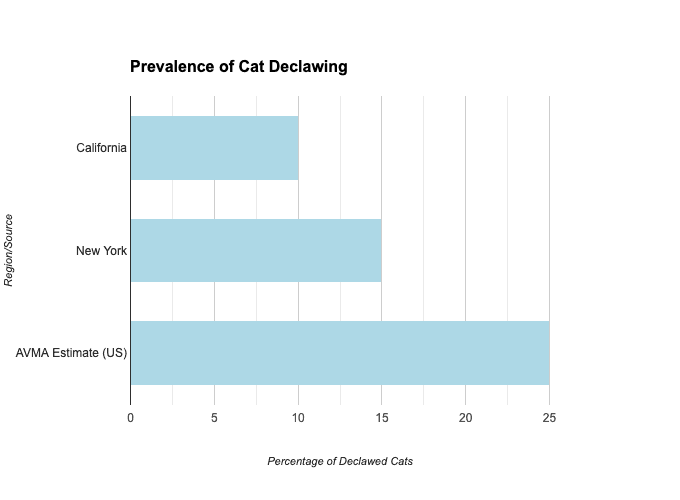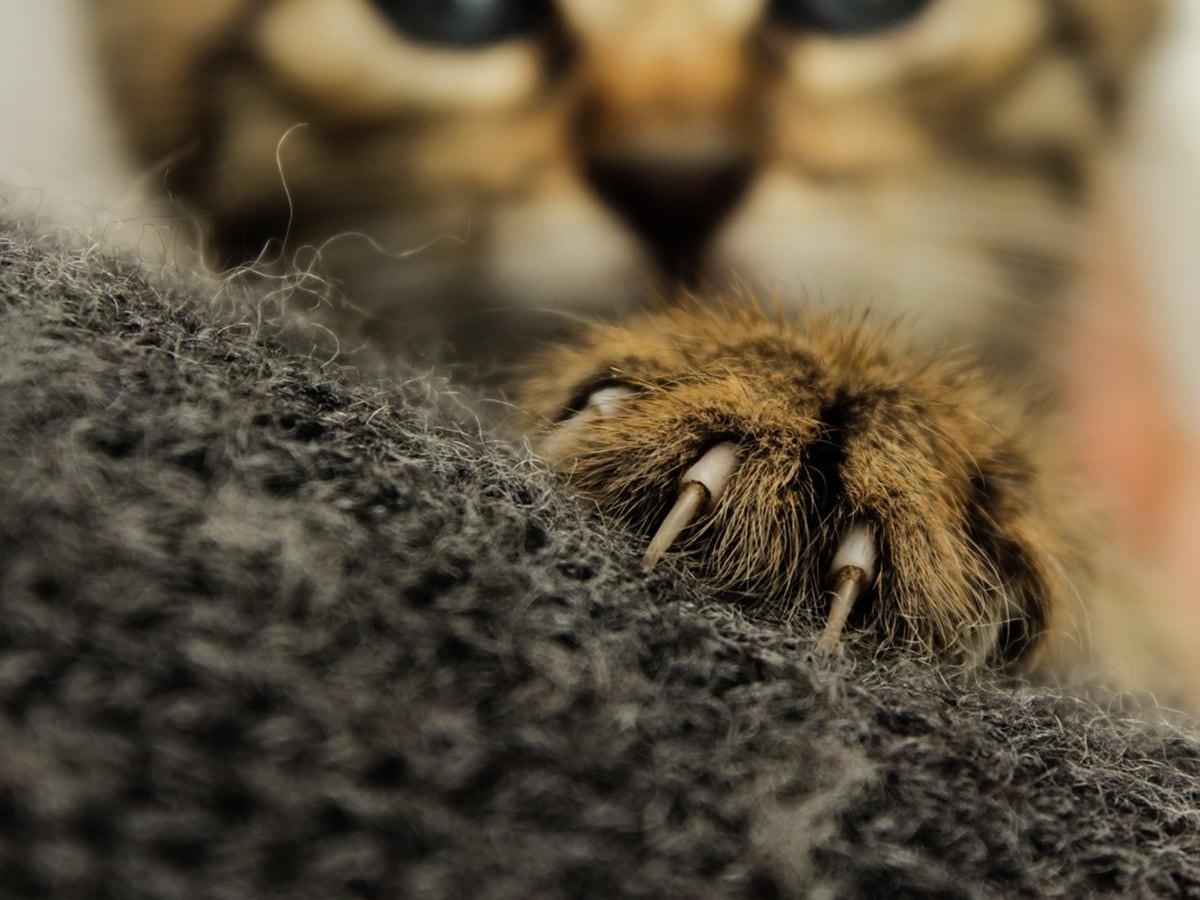Cat declawing (onychectomy) is a complex decision for pet owners. To help you make an informed choice, it's essential to understand the costs – both financial and to your cat's well-being. We'll discuss the expenses involved, how to choose a qualified veterinarian, and alternatives to consider.
Understanding the Cost of Declawing
Declawing a cat isn't cheap, with prices ranging from $600 to $1,800. Factors influencing cost include:
Procedure itself: The surgery typically averages around $600.
Vet-specific factors: Anesthesia ($130), pre-surgery exam ($80), and post-op medications ($50).
Vet availability: Limited vets offer declawing, so you may have to pay to travel with your pet to find the right vet
Cat's age: Kittens may be less expensive due to faster recovery compared to adult cats.
Overnight stay: Monitoring after surgery adds up to $100/night.
Choosing a Qualified Vet for Declawing
Finding a veterinarian who prioritizes your cat's well-being is crucial. Here's what to look for:
Expertise: Ask about their declawing experience, the methods they use (laser is often preferred for reduced pain), and their approach to pain management.
Good communication: Seek a vet with good reviews who takes the time to explain the procedure, aftercare, and potential risks.
Methods of Declawing and Cost
Scalpel Blade/Nail Trimmer: Traditional method, potentially more painful recovery.
Laser: Reduces bleeding and may be less painful, but is generally more expensive.
Post-Declaw Care and Costs
Aftercare is key to a smooth recovery:
Overnight stay (optional): Aids with monitoring but adds to the financial burden.
Antibiotics: Preventing infection is essential. Complete the full course.
Pain management: Consult your vet on safe options like medication or patches.
Long-Term Considerations
Declawing has the potential for long-term consequences:
Joint pain: Can result from altered walking patterns.
Litter box problems: It can be painful for your cat to dig without claws.
Behavioral changes: This may include increased aggression or spraying.
Are Claws Essential for Cats?
Cats heavily rely on their claws for:
Defense: Primary protection from threats. Indoor-only is recommended for declawed cats.
Balance: Supports healthy stretching and musculoskeletal function.
Marking territory: Normal behavior, lacking this outlet might lead to other behavioral issues.
Vet Insights:
According to a study conducted at NCBI,
Owner Motivations: The most common reasons given by owners for declawing were:
Preventing damage to furniture (74%)
Preventing injury to humans (59%)
Veterinarian Views: Interestingly, while a significant percentage of vets performed declawing, the study notes:
Most veterinarians (75%) believed the procedure causes at least some amount of post-operative pain.
Many (61%) felt it would be beneficial if declawing were less common.

Alternatives to Declawing
Many effective alternatives exist to address problem behaviors:
Nail trims: Regular trims at home or at the vet are vital.
Nail caps: Safe sheaths to blunt sharp points.
Behavioral training: Rewarding positive scratching behavior and deterring unwanted habits. Consult a pet behaviorist for help.
Important Note: The American Veterinary Medical Association (AVMA) discourages declawing unless it is a last resort after all other options have been exhausted due to the potential health and behavioral risks involved.
The Decision: Weighing Costs and Consequences
Declawing is a permanent decision with potential impacts on your cat's physical and emotional well-being. Before opting for surgery, carefully consider the expenses, long-term risks, and alternatives in consultation with your trusted veterinarian.

If you need a story or someone to talk to your cat like a person, I’m your person. With 3 cats, 1 dog, and a lifetime of pets, I write from experience, usually with a cat on my keyboard and a dog in my lap.
Kogan, Lori R, et al. “Feline Onychectomy: Current Practices and Perceptions of Veterinarians in Ontario, Canada.” The Canadian Veterinary Journal = La Revue Veterinaire Canadienne, vol. 57, no. 9, 2016, pp. 969–75, https://www.ncbi.nlm.nih.gov/pmc/articles/PMC4982569/. Accessed 21 Feb. 2024.











